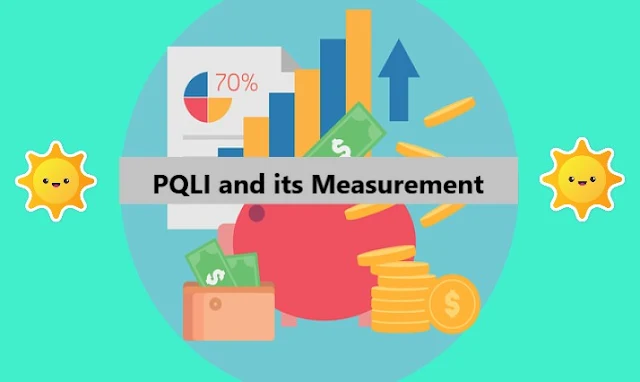Concept of PQLI (Physical Quality of Life Index)
The Physical Quality of Life Index (PQLI) is a human development indicator that focuses on three fundamental needs: nutrition, health, and literacy. Unlike the Human Development Index (HDI), which assesses a broader range of indicators, the PQLI assesses people’s basic physical needs. This blog post will explore the PQLI in more detail, including its history, calculation, and limitations.
Morris David Morris developed the PQLI in the 1970s as an alternative to the GDP-based measures of development that were prevalent at the time. Morris contended that traditional measures of development were overly focused on economic growth and failed to capture key aspects of human well-being (Source). As a result, he created the PQLI, which aimed to provide a more holistic measure of development that considered people’s physical needs.
Calculating the PQLI
The PQLI is calculated by the arithmetic mean of three basic indicators: one-year life expectancy, infant mortality rate, and adult literacy rate. Each of these indicators is weighted equally, and the final score ranges from 0 to 100. A score of 100 indicates that a country has reached the pinnacle of physical well-being, while a score of 0 indicates the inverse.
To calculate the PQLI, we use the following formula:
PQLI = [(life expectancy x literacy rate x (1 – infant mortality rate)]1/3 x 10
Limitations of the PQLI
The Physical Quality of Life Index (PQLI) is a useful tool for measuring people’s physical well-being, but it has limitations. One of the most serious criticisms leveled at the PQLI is that it focuses solely on three indicators – life expectancy at one year, infant mortality rate, and adult literacy rate – and does not take into account other important aspects of development, such as economic growth, environmental sustainability, or social equity.
Another limitation of the PQLI is that it only provides a snapshot of people’s physical well-being at a given time. It excludes changes in people’s physical well-being over time and the impact of policies or interventions aimed at improving people’s physical well-being. For example, a country may have a high PQLI score but still face physical well-being challenges in the future due to environmental degradation, natural disasters, or other factors.
Moreover, since the PQLI is only applicable at the national level, regional or local variations in physical well-being may be missed. For example, a country’s PQLI score may be high. Still, certain regions or communities within the country may have significantly lower levels of physical well-being due to social, economic, or environmental factors.
Furthermore, the PQLI does not consider cultural factors such as diet, which can significantly impact people’s physical well-being. For example, a country with a high PQLI score may have a diet deficient in certain essential nutrients, resulting in malnutrition and poor health outcomes.
Conclusion
In conclusion, the PQLI provides a valuable measure of people’s physical well-being and complements other development measures such as the HDI. By focusing on basic needs such as nutrition, health, and literacy, the PQLI highlights the importance of meeting people’s fundamental needs for a healthy and fulfilling life. However, it’s important to recognize the limitations of the PQLI and use it in conjunction with other measures and assessments to get a complete picture of development and well-being.
- National Income (NI) and its Measurement
- NNP and its Measurement Methods
- Differences between GDP and GNP
- GNP and its Measurement Methods
- GDP and its Measurement Methods
- Personal Income (PI) and its Measurement
- Disposable Personal Income (DPI) and its Measurement
- Differences Between Personal Income and Disposable Personal Income
- PCI and its Measurement
- Happiness Index and its Measurement
- PQLI (Physical Quality of Life Index) and its Measurement
- HDI and its Measurement






Please leave your comments or ask your queries here. The comments shall be published only after the Admin approval.